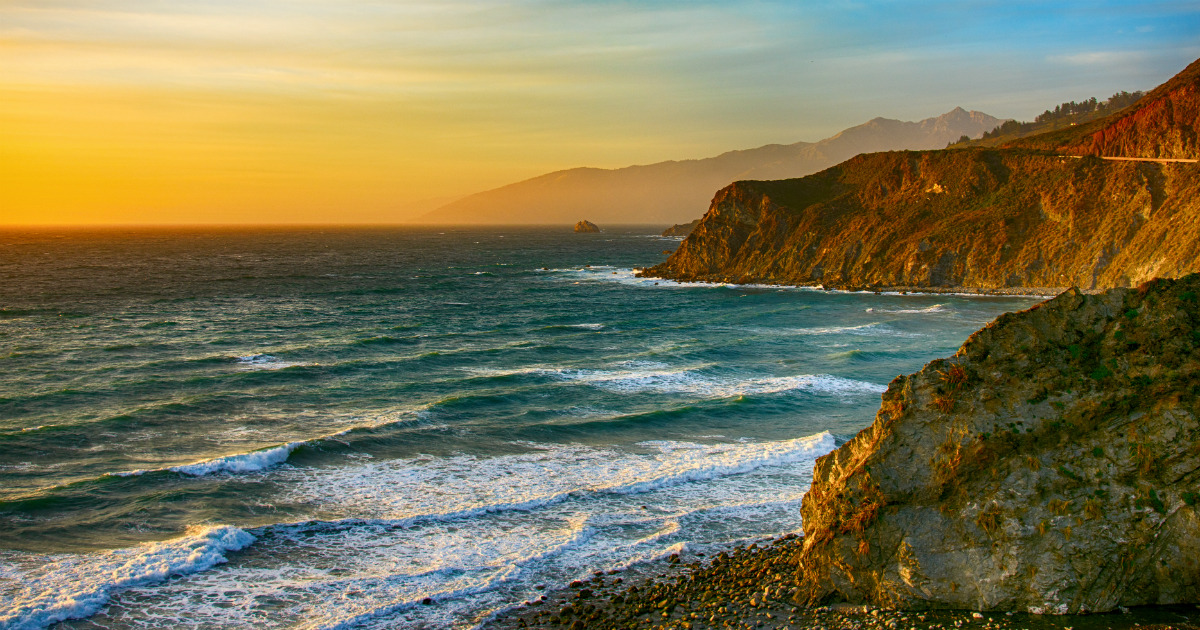To celebrate our first 50 years at The Santa Barbara & Ventura Colleges of Law, we’ve asked our students to revisit historical and noteworthy cases.
The future of the California coast is uncertain. Climate change is affecting sea-levels, threatening coastal communities. Although the best science available quantifies future risks, there is no way to predict with absolute certainty the impact our actions or inactions will have in the future. One response to sea-level rise in California—coastal armoring—has potential negative side effects.
Coastal Act of 1976
In 1972, private development was cutting off public access to the shore. Californians rallied to “Save our Coast.” They created an initiative called Prop. 2o, with the policy objective of preserving, protecting, and, where possible, restoring resources of California’s coastal zone for the enjoyment of current and succeeding generations. Prop. 20 passed, which led to the creation of the Coastal Act of 1976 and the establishment of the California Coastal Commission (CCC).
Governing sea walls
Section 30235 of the Coastal Act says that sea walls or other forms of construction that alter the natural shoreline process “shall be permitted when required to serve coastal-dependent uses or to protect existing structures or public beaches in danger from erosion, and when designed to eliminate or mitigate adverse impacts on local shoreline sand supply.”
Currently, the CCC will permit a shoreline protective device when a property currently meets all of the following criteria:
- There is an existing structure, public beach, or coastal dependent use.
- It is in danger of erosion.
- The shoreline protection is both required to address the danger and designed to eliminate or mitigate impacts on sea supply.
New projects need to meet stability and structural integrity requirements, but they cannot contribute significantly to erosion, the destruction of the site, or require the construction of a protective device that would substantially alter the bluffs and cliffs. Thus, for new projects, setback requirements are imposed and based on an assessment of the projected erosion and related hazards for the life of the proposed development to ensure there are no adverse impacts.
The CCC also requires that landowners assume the risk of developing along shorelines and coastal bluffs where the risk of coastal hazards are present. Since the late 1990s, the CCC has approved new developments on the coast with deed restrictions. The deed restrictions prohibit any future construction of shoreline protections for these developments and waive any rights that may exist for a shoreline structure under Section 30235.
The deed restrictions also allow for the protection of shoreline areas for scenic recreation and natural resources. If the development is threatened by erosion and becomes inhabitable, the deed restrictions prohibit the development of shoreline protective devices and require the property owners to remove the development as well as clean up any debris. Thus, the broad legislative intent is to allow shoreline protection for developments that were in existence before passing the Coastal Act, but to avoid such protective structures for new development now subject to it.
Effects of sea walls
Shoreline protective devices can affect a wide range of other coastal resources and land use that the Coastal Act protects. Shoreline protective devices can impede or degrade public access and recreation along shorelines by occupying beach tidelands and reducing shoreline sand supply.
A shoreline protective device is primarily set at the backside of a beach. The location of the device ultimately leads to the loss of the beach. Thus, shoreline protection structures are a serious concern regarding public access and recreation policies in the Coastal Act. They often degrade the scenic qualities of coastal areas and alter natural landforms.
Ultimately, they halt shoreline erosion, and by doing so, these devices prevent inland migration of intertidal habitats, salt marshes, beaches, and other low-lying habitats that rising sea levels will inundate. The guidelines for the adverse effects of shoreline protective structures recommend avoiding hard shoreline armoring whenever possible. This effectively denies development in hazardous locations, allows development that is easily removable as the shoreline erodes, and requires new developments to have further setbacks not requiring shoreline protective devices for the life of the projects.
The future of California
Climate change and sea-level rise is happening now and will have a drastic effect on coastal communities in California. The current trend of greenhouse gas emissions will cause sea levels to rise. Currently, California’s coast is largely affected by seasonal El Nino-driven storms, causing damage to coastal communities. As sea-level rise continues to increase, small storms will cause significant damage, and large events will have unprecedented consequences.
As these threats continue, many will look at sea walls as a solution to protect their property. A sea wall has damaging effects on the coast and is not a permanent solution. The CCC must continue to enforce their strict policies regarding sea walls. The protection of public beach access is more important than protecting coastal properties.
ABOUT THE AUTHOR:
Gonzalo Villalobos is a 4L at the Santa Barbara Colleges of Law. During his time in law school, he interned at the Public Defenders office and the Bankruptcy Court. Villalobos finished his undergrad at University of California, Santa Barbara (UCSB) with a degree in Environmental Studies, and has had the opportunity to work with the City of Santa Barbara Community Development Department. He also interned with the UCSB Campus Planning and Design and the County of Santa Barbara Long Range Planning Department. After law school, he wants to pursue working with matters relating to the environment, land use, and the community.
Learn more
If you would like to learn about The Santa Barbara & Ventura Colleges of Law, fill out the form below to request more information. Or you can apply today through our application portal.

